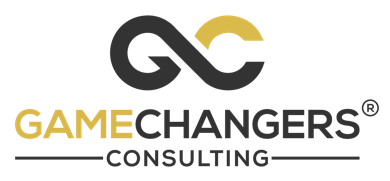A BETTER WAY TO BUILD A STRATEGIC PLAN: A 30-DAY, APP-BASED, MICRO-REFLECTION JOURNEY
BOOSTING RETENTION THROUGH PEER CONNECTION & BELONGING
Experience the Gamechanger Challenge App in Action!
TRANSFORMING ONLINE LEARNING THROUGH CONNECTION & BELONGING
Experience the Gamechanger Challenge App in action!
Is your business running on vision or running on fumes?
Take our quick 5-minute self-assessment to discover how the absence of a clear strategic plan might be holding your team back.
In just nine simple questions, you’ll see where misalignment, short-term firefighting, or missed opportunities could be costing you growth. Uncover how a shared, living plan can bring clarity, focus, and momentum!
How Valuable is a Strategic Plan for Your Business?
Instructions: For each statement below, rate how often it occurs in your business on a scale of 1 to 5:
1 = Never
2 = Rarely
3 = Sometimes
4 = Often
5 = Always
Statements:
1. Frequent Firefighting: We spend a lot of time reacting to urgent issues instead of focusing on long-term goals.
(If you often feel like you're putting out fires rather than making progress, rate higher on the scale.)
2. Misaligned Teams: Our team members often have different ideas of what’s important or what our priorities are.
(If people seem to be pulling in different directions, rate higher.)
3. Lack of Clear Goals: We struggle to set or communicate clear, long-term objectives for the business.
(If your goals are often vague or shifting, rate higher.)
4. Redundant Efforts: We frequently find that teams or departments are duplicating work or working at cross-purposes.
(If you notice overlap and duplication, rate higher.)
5. Extra Communication Needed: We spend a lot of time clarifying tasks or re-explaining goals to ensure everyone is on the same page.
(If frequent re-explanations are needed, rate higher.)
6. Short-Term Focus: Our decision-making tends to be more forward-looking and long-term strategies are often neglected in favor of immediate needs.
(If you find that long-term planning is frequently sacrificed for short-term issues, rate higher.)
7. Missed Opportunities: We sometimes miss out on market trends or new opportunities because we’re not proactively planning for the future.
(If you feel like opportunities are slipping by, rate higher.)
Low Morale or Turnover: Employees seem less engaged or unsure of the company’s direction, leading to reduced morale or turnover.
(If you notice a lack of engagement or higher turnover, rate higher.)Confusion About Roles: There is often confusion about who is responsible for what, which slows down progress.
(If role confusion is common, rate higher.)
Interpreting Your Score:
· 8–16: You likely have a strong strategic foundation. A formal strategic plan could still refine and strengthen your direction.
· 17–32: You’re experiencing moderate strategic drift. A strategic plan could help align your team and improve focus.
· 33–45: You’re likely feeling the strain of operating without a strategic plan. Implementing one could greatly improve long-term stability and success.
Why Your Business Needs Strategy And a Better Way to Build It
The High Cost of Not Having A Strategic Plan
Many organizations don’t have a formal strategic plan. The result?
Reactive firefighting: Without a guiding plan, leaders spend energy on urgent problems instead of long-term priorities.
Fragmented decision-making: Teams pull in different directions, wasting resources and duplicating efforts.
Lost opportunities: Competitors who plan strategically move faster, spot market shifts sooner, and gain advantage.
Low morale and high turnover: Employees without a sense of direction disengage. Purpose and ownership suffer.
Financial risk: Organizations without a plan are far more vulnerable to downturns, with confusion and short-term thinking leading to missed revenue and even collapse.
No plan at all isn’t neutral—it’s a liability.
Why Traditional Strategic Planning Often Fails

Even when organizations do plan, offsite retreats and thick binders of goals often fall short. Why?
1. Lack of clarity and poor communication.
2. Misaligned goals and shifting priorities.
3. Unrealistic, overly complex plans.
4. Inflexibility and poor resource planning.
5. Disengagement and leadership indifference.
Consequence: Strategies gather dust on shelves, leaving businesses no better off than if they had no plan at all.
Build Strategy Differently: A 10-Minute-a-Day Journey That Engages Your Whole Team
Instead of expensive retreats and one-time planning sessions, our approach builds a living, breathing strategic plan in just 10 minutes a day. Invite your team to contribute!
Inclusive: Every voice matters—leaders, managers, stakeholders.
Progressive: Like marinating a steak, insights deepen over time. Each reflection builds richer flavor into the plan.
Practical: No disruption to business. Strategy creation happens on the go, alongside daily operations.
Sustainable: Daily micro-reflections foster habits of alignment, accountability, and execution that last.
Shared Ownership: Because the plan is co-created, it carries commitment from the entire leadership team.

The Value Proposition
Without a strategic plan → your team drifts.
With a traditional plan → you risk dust on a shelf.
With this journey → you gain a clear, actionable roadmap, co-created by those who will bring it to life.
10 minutes a day. 30 days. A plan you believe in.
Contact us for more information
FAQ
1. What is the “Strategy Challenge”?
Answer: The Strategy Challenge is a 30-day, app-based micro-reflection journey that helps leaders and teams build a clear, living strategic plan in just 10 minutes a day — without the need for costly retreats or consultants.
2. Who should take the Strategy Challenge?
Answer: It’s designed for business owners, team leaders, and organizations who want clarity, focus, and alignment — especially if you feel stuck in firefighting mode or lack a unified plan for growth.plans.
3. How does this approach differ from traditional strategic planning?
Answer: Traditional planning is often a one-time event. The Strategy Challenge transforms strategy into a daily, evolving habit — creating real alignment and commitment through continuous micro-reflections.
4. How long does the Strategy Challenge take each day?
Answer: Just 10 minutes per day. The journey is intentionally micro — small reflections and guided prompts that compound into meaningful strategic insight over 30 days.
5. Do I need to pause operations or schedule retreats to do this?
Answer: Not at all. The process fits seamlessly into your regular workday. You build strategy while running your business — not apart from it.
6. What will I have by the end of the 30 days?
Answer: A clear, actionable, and co-created strategic plan — one that reflects your organization’s real challenges, goals, and priorities. You’ll also have a team that’s aligned and engaged around a shared direction.
7. How is the Strategy Challenge “app-based”?
Answer: You’ll use a digital platform that delivers daily reflection prompts, captures team input, and tracks emerging themes — making the strategy creation process collaborative, visual, and measurable.
8. Can multiple team members participate?
Answer: Absolutely. The process thrives on inclusivity. Leaders, managers, and key stakeholders can all contribute reflections that shape the final plan, ensuring shared ownership and buy-in.
9. What if my organization already has a strategic plan?
Answer: Then the Challenge helps refine it. You’ll uncover hidden misalignments, refresh outdated goals, and rebuild momentum — turning your static plan into a living, actionable document.
10. How do I interpret my self-assessment results?
Answer: Your score reveals how clearly your organization is currently aligned.
8–16: Strong foundation. Refine your focus.
17–32: Moderate drift. Realign with clarity.
33–45: High strain. You need a plan — fast.
This gives you a diagnostic starting point for your Strategy Challenge journey.
11. What benefits can I expect after completing the challenge?
Answer: You can find free strategic plan samples and templates from U.S. corporations, nonprofits, and universities on official websites or strategy-focused portals. Our page also includes a downloadable U.S.-based sample template.
12. How can I create my own strategic plan using real-world examples?
Answer: Start by reviewing U.S. case studies from similar industries. Identify common frameworks like SWOT analysis, goal-setting, and KPI tracking. Then, use our downloadable strategic plan template to customize your own plan.
Take the Next Step
Ready to move from planning to performance? - Schedule a free consultation here, or reach out to us at [email protected]
© 2025 Gamechangers Consulting. All rights reserved.
